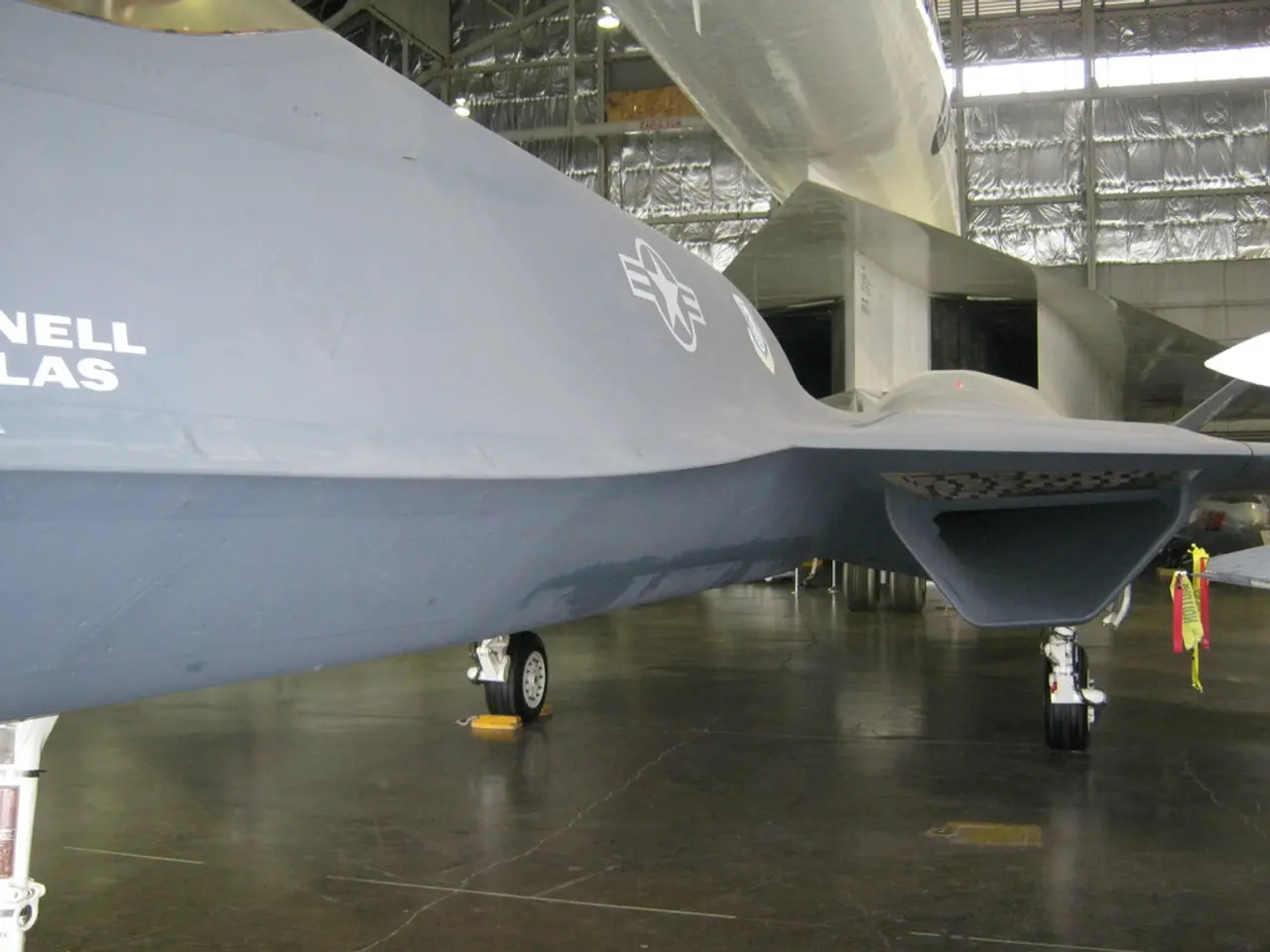"Time-Traveling Journey: Quick Dash from Paris to New York in 2 Hours Achievable with Latest Supersonic Plane"
In a remarkable development, the skies over land are set to welcome commercial supersonic flights following a significant regulatory shift in 2025. The U.S. presidential executive order, which repealed the longstanding ban on civilian supersonic flights over populated areas, paves the way for a new generation of quiet supersonic aircraft to revolutionize air travel.
At the forefront of this technological revolution are companies like Boom Supersonic, who have made significant strides in advancing supersonic travel. Their XB-1 demonstrator aircraft has already flown faster than the speed of sound without generating a detectable sonic boom, thanks to proprietary "boomless cruise" methods. Boom’s upcoming commercial jet, called Overture, is designed to carry around 80 passengers at Mach 1.7 (about 1.7 times the speed of sound) and is attracting interest from major airlines including American Airlines, Japan Airlines, and United Airlines.
Advances in additive manufacturing and engine technology, such as 3D printing of key high-performance engine components, are enabling faster development and testing cycles for these engines, increasing reliability and efficiency in supersonic flight.
The promise of supersonic travel extends to transatlantic journeys like Paris to New York, where flight times could be dramatically reduced. The Concorde, which operated from 1976 to 2003, set a historical precedent by reducing transatlantic flight times to about 3.5 hours—roughly half the time of contemporary subsonic flights. The new generation of supersonic aircraft aims to eliminate the Concorde's main obstacle: the loud sonic boom it generated.
Major aerospace firms and airlines are actively investing in these next-generation supersonic aircraft, signaling a revival in high-speed luxury and business travel across the Atlantic. The interior of the new supersonic aircraft offers spacious seating arrangements, high-tech amenities, lower cabin pressure for passenger comfort, noise-cancellation technology, and gourmet meal options prepared by renowned chefs.
However, it's not just about speed. Balancing technological innovation with environmental stewardship is essential as stakeholders push forward with supersonic developments. Supersonic jets typically consume more fuel per passenger than subsonic planes, posing a challenge in terms of greenhouse gas emissions. Manufacturers are tasked with developing cleaner technologies or alternative fuels to mitigate the environmental impacts of supersonic flights.
Noise pollution is another environmental concern associated with supersonic travel, requiring advancements in aircraft design or routing strategies. The development and operation of supersonic jets may stimulate economic growth through increased demand for specialized skills, manufacturing expertise, and support services. Airports may need to upgrade infrastructure to accommodate these advanced aircraft, contributing to local economies.
The rapid travel times offered by supersonic aircraft could significantly benefit time-sensitive industries like finance, technology, and international trade. However, competition among airlines is likely to intensify with the introduction of supersonic travel options. The interior of the new supersonic aircraft offers spacious seating arrangements, high-tech amenities, lower cabin pressure for passenger comfort, noise-cancellation technology, and gourmet meal options prepared by renowned chefs.
The Concorde, a supersonic aircraft developed in the 1970s and retired in 2003, was a joint venture between British and French aerospace companies. The Tupolev Tu-144, another supersonic passenger aircraft developed by the Soviet Union, faced technical difficulties and a shorter operational lifespan. Commercial supersonic aviation experienced a hiatus due to economic and environmental hurdles overshadowing technological triumphs.
In summary, the revival of supersonic travel could transform transatlantic air travel by greatly reducing journey times, enhancing global connectivity, and enabling a new era of commercial supersonic flight that balances speed with community noise concerns. The development and operation of supersonic jets may stimulate economic growth, but it's crucial that environmental concerns are addressed to ensure a sustainable future for high-speed travel.
- The upcoming commercial jet from Boom Supersonic, named Overture, is designed with innovations that include noise-cancellation technology, spacious seating arrangements, and gourmet meal options, aiming to revolutionize air travel and attract interest from major airlines.
- The technology development in additive manufacturing and engine design, such as 3D printing of high-performance engine components, is aiding faster development and testing cycles for the new generation of supersonic aircraft, Increasing their reliability and efficiency.
- The return of high-speed luxury and business travel is a burgeoning trend in the airline industry, as companies like Boom Supersonic push the boundaries of technology in supersonic aircraft design.
- The environmental impact of supersonic jets is a significant concern for stakeholders, as they typically consume more fuel than subsonic planes, posing challenges in terms of greenhouse gas emissions. To mitigate these impacts, manufacturers are developing cleaner technologies or alternative fuels.
- The reduction in flight times offered by supersonic aircraft could significantly benefit time-sensitive industries like finance, technology, and international trade, while also enhancing global connectivity.
- Looking back at the history of supersonic travel, the Concorde, developed in the 1970s, was a joint venture between British and French aerospace companies. However, it was retired in 2003 due to economic and environmental hurdles, establishing a hiatus in commercial supersonic aviation that is now poised to end.




